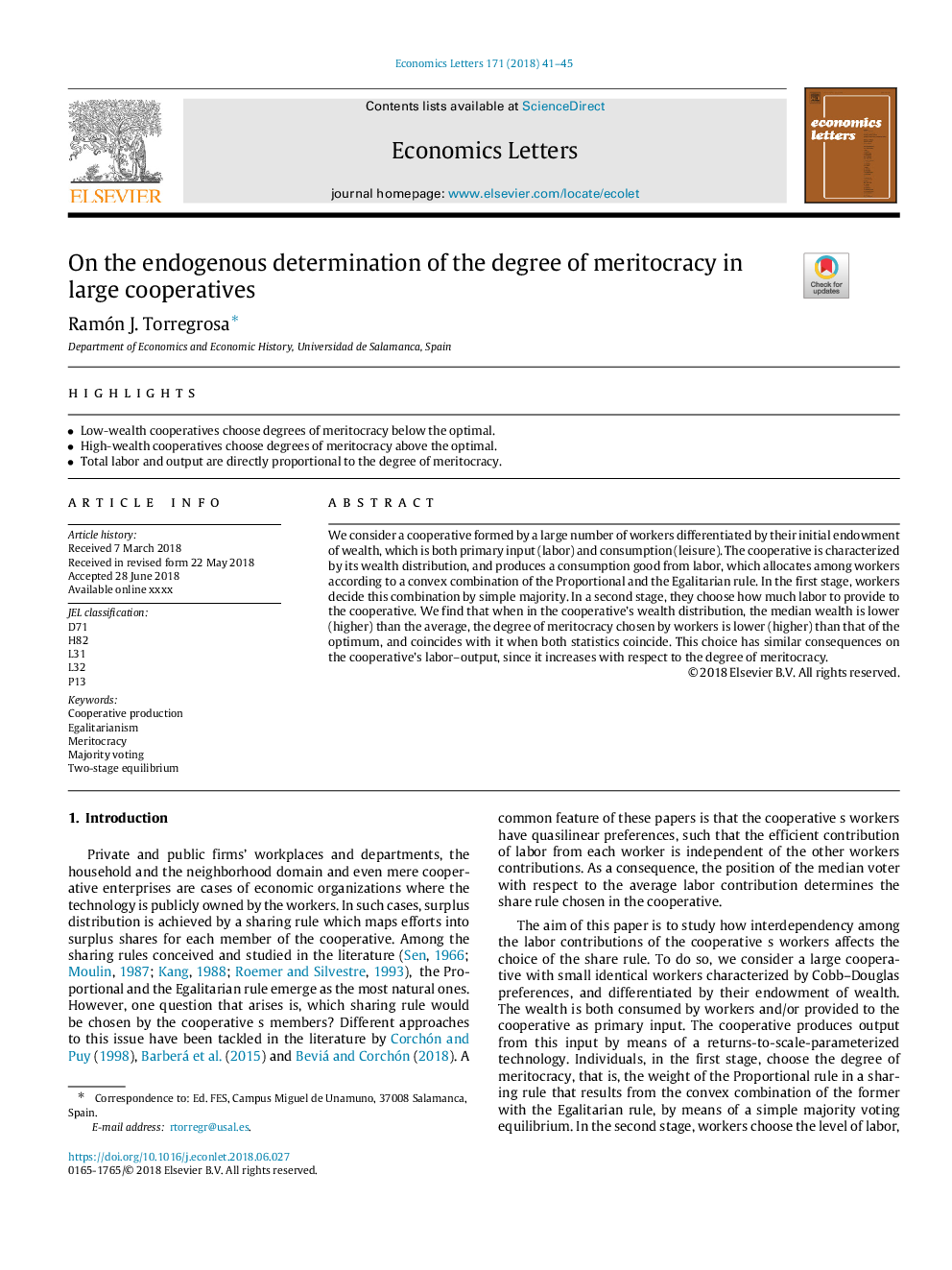| Article ID | Journal | Published Year | Pages | File Type |
|---|---|---|---|---|
| 7348453 | Economics Letters | 2018 | 5 Pages |
Abstract
We consider a cooperative formed by a large number of workers differentiated by their initial endowment of wealth, which is both primary input (labor) and consumption (leisure). The cooperative is characterized by its wealth distribution, and produces a consumption good from labor, which allocates among workers according to a convex combination of the Proportional and the Egalitarian rule. In the first stage, workers decide this combination by simple majority. In a second stage, they choose how much labor to provide to the cooperative. We find that when in the cooperative's wealth distribution, the median wealth is lower (higher) than the average, the degree of meritocracy chosen by workers is lower (higher) than that of the optimum, and coincides with it when both statistics coincide. This choice has similar consequences on the cooperative's labor-output, since it increases with respect to the degree of meritocracy.
Related Topics
Social Sciences and Humanities
Economics, Econometrics and Finance
Economics and Econometrics
Authors
Ramón J. Torregrosa,
